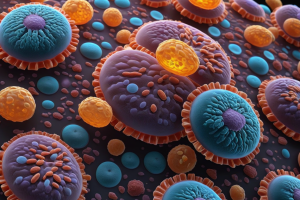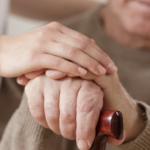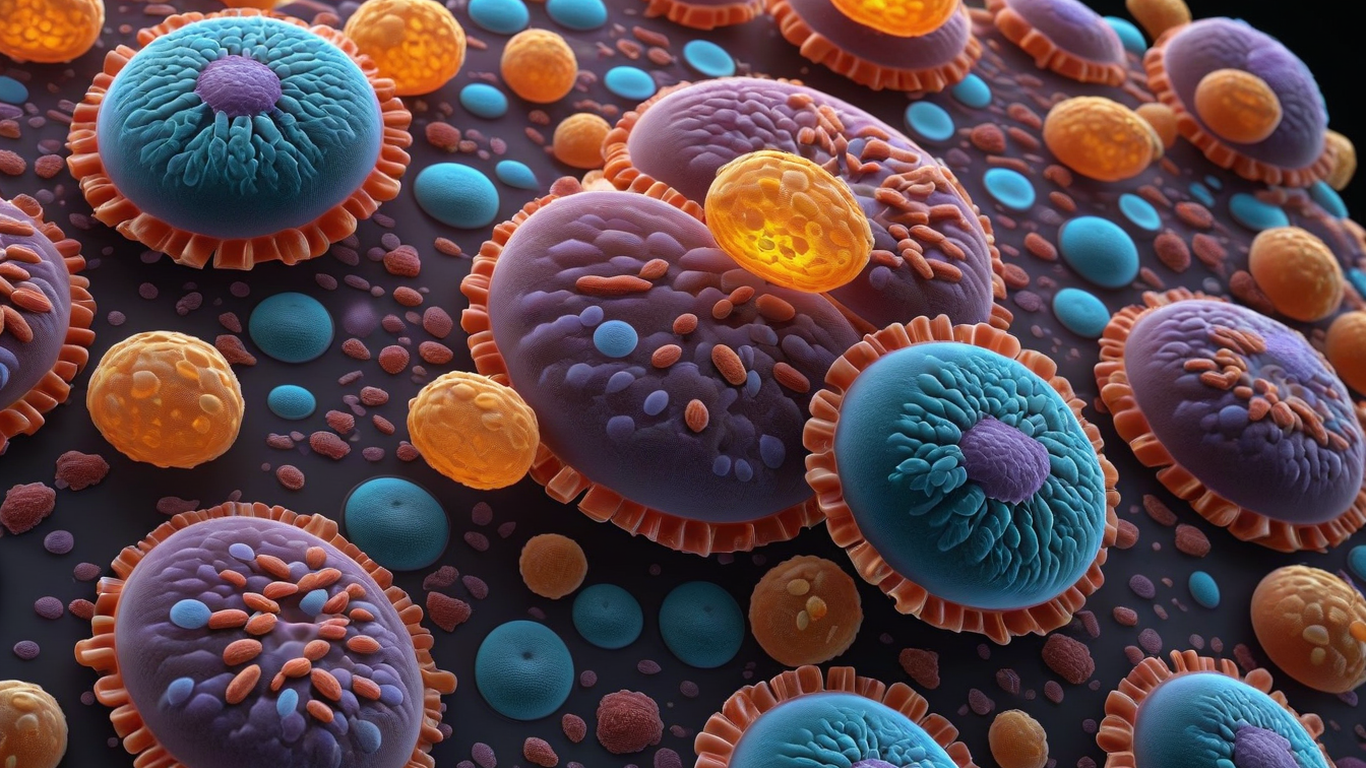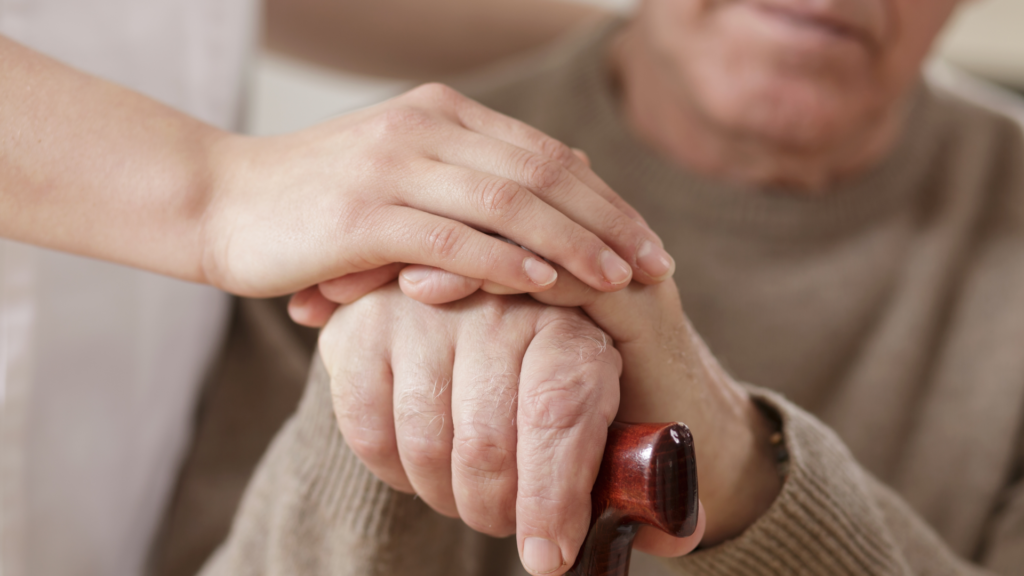
Parkinson’s Disease is a neurodegenerative disorder that affects millions of people worldwide. This chronic condition primarily targets the nervous system, causing a variety of physical and cognitive symptoms. In this comprehensive blog post, we will delve into the key aspects of Parkinson’s Disease, including its causes, symptoms, diagnosis, treatment options, and living with the condition. By increasing our understanding of Parkinson’s Disease, we can better support those affected and contribute to ongoing research efforts.
Table of Contents
- What is Parkinson’s Disease?
- Causes of Parkinson’s Disease
- Symptoms of Parkinson’s Disease
- Diagnosis of Parkinson’s Disease
- Treatment Options for Parkinson’s Disease
(a) Medications for Parkinson’s Disease
(b) Physical Therapy and Rehabilitation
(c) Deep Brain Stimulation (DBS)
(d) Lifestyle Modifications
(e) Parkinson’s Disease Management
(f) Parkinson’s Disease Exercises - Living with Parkinson’s Disease
- Parkinson’s Disease Research
- Conclusion
- FAQ
- Articles of Interest
What is Parkinson’s Disease?
Parkinson’s Disease is a complex and multifaceted condition that has a significant impact on the lives of those affected. It is named after Dr. James Parkinson, the British physician who first described the disease in 1817. Since then, extensive research has been conducted to better understand the causes, symptoms, and treatment options for this debilitating condition.
The primary hallmark of Parkinson’s Disease is the progressive loss of dopamine-producing cells in the substantia nigra, a small area deep within the brain. Dopamine plays a crucial role in transmitting signals that facilitate smooth and coordinated muscle movements. When the dopamine levels decline, the communication between the brain and the muscles becomes disrupted, leading to the characteristic motor symptoms associated with Parkinson’s Disease.
The motor symptoms of Parkinson’s Disease are diverse and can manifest differently in each individual. The most recognizable symptom is tremors, which usually begins in the hands and can eventually affect other parts of the body. These tremors are often described as a rhythmic shaking or trembling movement. Another common symptom is bradykinesia, which refers to the slowness of movement. Individuals with Parkinson’s Disease may find it challenging to initiate and execute voluntary movements, such as walking or reaching for objects. Rigidity, characterized by stiffness and resistance in the muscles, is another prominent symptom. This stiffness can make everyday tasks difficult and contribute to a stooped posture. Additionally, postural instability, which affects balance and coordination, can lead to frequent falls and injuries.
While the motor symptoms are the most well-known aspects of Parkinson’s Disease, there are also numerous non-motor symptoms that can significantly impact an individual’s quality of life. These symptoms may include depression, anxiety, sleep disturbances, cognitive impairment, and difficulties with speech and swallowing. It’s important to note that not everyone with Parkinson’s Disease experiences all of these symptoms, and the severity can vary from person to person.
Parkinson’s Disease is a progressive neurological disorder characterized by the degeneration of dopamine-producing cells in the brain. It presents with a range of motor and non-motor symptoms that significantly impact daily life. While the exact cause remains unknown, researchers have identified potential genetic and environmental factors that contribute to its development. Diagnosis relies on careful evaluation of symptoms and medical history. Treatment options include medication, therapy, and surgical interventions. With a comprehensive and holistic approach to management and support, individuals with Parkinson’s Disease can lead fulfilling lives while contributing to the advancement of research for better treatments and, ultimately, a cure.
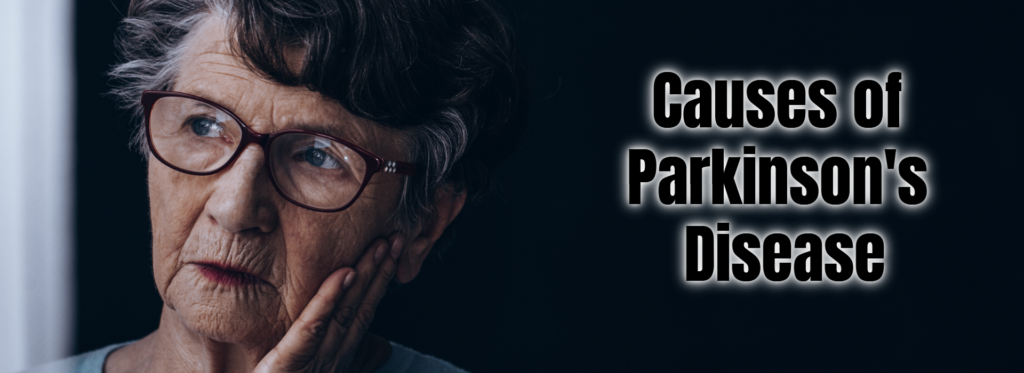
Causes of Parkinson’s Disease
While the precise cause of Parkinson’s Disease is yet to be fully understood, researchers have made significant progress in identifying various factors that contribute to its development. One crucial aspect is genetic mutations, which can play a role in the development of Parkinson’s Disease in certain individuals. Several genes have been associated with an increased risk of Parkinson’s, including the LRRK2, PARK2, PARK7, and PINK1 genes. However, it’s important to note that genetic mutations account for only a small percentage of Parkinson’s cases, indicating that other factors are also involved.
Environmental factors have also been implicated in the development of Parkinson’s Disease. Exposure to certain toxins and chemicals, such as pesticides and herbicides, has been studied as a potential risk factor. The link between exposure to these substances and the increased risk of developing Parkinson’s is still being explored, but studies have suggested a possible association. It’s worth noting that not everyone exposed to these environmental factors develops Parkinson’s Disease, and the relationship between exposure and the disease is complex.
Another significant aspect of Parkinson’s Disease causation is the interplay between genetic and environmental factors. Research has indicated that a combination of genetic susceptibility and exposure to certain environmental triggers may increase the risk of developing the disease. Understanding the intricate interactions between genes and environmental factors is a crucial area of ongoing research.
Age is also a key factor in the development of Parkinson’s Disease. While the disease can affect individuals of all ages, it is more commonly diagnosed in people over the age of 60. The risk of developing Parkinson’s increases with age, although it is important to note that younger individuals can also be diagnosed with the condition.
Furthermore, researchers are exploring other potential factors that may contribute to the development of Parkinson’s Disease. These include oxidative stress, mitochondrial dysfunction, inflammation, and impaired protein handling within the brain. While the exact mechanisms linking these factors to Parkinson’s Disease are still being studied, they provide valuable insights into the complex nature of the condition.
It is important to emphasize that Parkinson’s Disease is not caused by any specific event or behavior in most cases. Instead, it is likely a result of a combination of genetic predisposition, environmental exposures, and other factors that vary from person to person. Further research is needed to gain a deeper understanding of these complex interactions and to identify potential preventive strategies.
In summary, the causes of Parkinson’s Disease are multifaceted and not fully understood. Genetic mutations, environmental factors, a combination of genetic and environmental influences, and age all contribute to the development of the disease. Ongoing research aims to unravel the intricate mechanisms underlying Parkinson’s Disease causation, which can ultimately lead to improved prevention strategies and more effective treatments.

Symptoms of Parkinson’s Disease
Parkinson’s Disease is characterized by a wide range of symptoms that can significantly impact an individual’s daily life. While the severity and progression of symptoms may vary, there are several primary motor symptoms commonly associated with the disease.
Tremors
Tremors are one of the most well-known and recognizable symptoms of Parkinson’s Disease. These involuntary shaking or trembling movements typically begin in the hands and can later affect other parts of the body, such as the arms, legs, jaw, or face. The tremors may occur at rest and often subside during purposeful movements.
Bradykinesia
Bradykinesia, or slowness of movement, is another prominent motor symptom of Parkinson’s Disease. Individuals with Parkinson’s may find it challenging to initiate movements and experience a general slowing down of motor functions. Simple tasks such as buttoning a shirt, writing, or getting up from a chair may require more time and effort.
Rigidity
Rigidity is characterized by stiffness and resistance in the muscles. It can affect various parts of the body, making movements less fluid and flexible. Rigidity can contribute to discomfort and aches, limiting a person’s range of motion and causing muscle stiffness and tension.
Postural Instability
Postural instability is another common motor symptom of Parkinson’s Disease. It affects balance and coordination, making individuals more prone to falls and instability while walking or standing. Changes in posture, such as stooping or leaning forward, are often observed in people with Parkinson’s.
In addition to these primary motor symptoms, Parkinson’s Disease can also manifest with various non-motor symptoms. These symptoms may occur independently or alongside motor symptoms, significantly impacting a person’s overall well-being.
Non-motor symptoms may include:
Depression:
Feelings of sadness, hopelessness, and a loss of interest or pleasure in activities once enjoyed.
Anxiety:
Persistent worry, restlessness, and a sense of unease or apprehension.
Sleep Disorders:
Insomnia, fragmented sleep, restless legs syndrome, and excessive daytime sleepiness.
Cognitive Impairment:
Difficulties with memory, attention, concentration, and executive functions. In some cases, Parkinson’s Disease may progress to Parkinson’s disease dementia.
Fatigue:
A general sense of exhaustion, often unrelated to physical exertion.
Autonomic Dysfunction:
Disturbances in the autonomic nervous system, leading to symptoms such as constipation, urinary problems, orthostatic hypotension (low blood pressure upon standing), and excessive sweating.
Speech and Swallowing Difficulties:
Changes in speech patterns, including soft or slurred speech, monotone voice, and difficulties with swallowing (dysphagia).
It’s important to note that not everyone with Parkinson’s Disease will experience all of these symptoms, and the severity can vary widely. Additionally, the progression of symptoms may be different for each individual, making the disease unique to each person affected.
Proper management and treatment of Parkinson’s Disease require a comprehensive approach that addresses both motor and non-motor symptoms. A multidisciplinary healthcare team, including neurologists, physical and occupational therapists, speech-language pathologists, and mental health professionals, can provide tailored care to address the specific needs of individuals living with Parkinson’s. Regular communication with healthcare professionals is essential to ensure the most effective treatment and support for managing symptoms and improving quality of life.
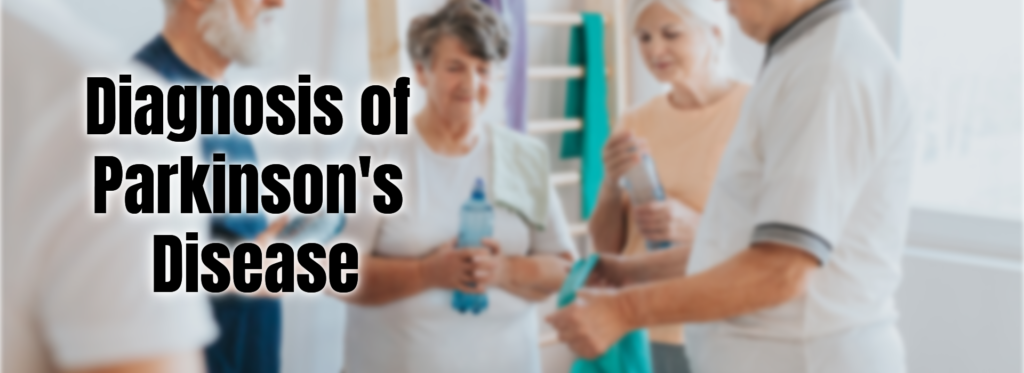
Diagnosis of Parkinson’s Disease
Diagnosing Parkinson’s Disease can be a complex process that requires careful evaluation and consideration of various factors. While there is no specific test or definitive biomarker for Parkinson’s Disease, healthcare professionals rely on a combination of medical history, physical examination, and the presence of characteristic symptoms to make an accurate diagnosis.
The initial step in diagnosing Parkinson’s Disease typically involves a detailed medical history review. The healthcare professional will inquire about the individual’s symptoms, the duration of symptoms, and any family history of Parkinson’s or other related conditions. It is important to provide a comprehensive account of symptoms, including motor and non-motor symptoms, as this information will help guide the diagnostic process.
A thorough physical examination is then conducted to assess motor function and look for specific signs associated with Parkinson’s Disease. The healthcare professional will observe the individual’s movements, posture, and balance. They may also perform specialized tests to evaluate motor skills, such as finger tapping, hand pronation/supination, or walking tests. These tests help to identify characteristic motor symptoms like tremors, bradykinesia, rigidity, and postural instability.
While the clinical evaluation is the cornerstone of diagnosing Parkinson’s Disease, additional tests may be performed to rule out other conditions with similar symptoms. These tests can help confirm the diagnosis by eliminating other potential causes of the symptoms. Imaging techniques, such as magnetic resonance imaging (MRI) or computed tomography (CT) scans, may be used to assess the brain structure and exclude other neurological conditions that may mimic Parkinson’s Disease.
In some cases, the healthcare professional may refer the individual to a neurologist or movement disorder specialist for further evaluation. These specialists have specific expertise in diagnosing and managing conditions like Parkinson’s Disease. They may conduct additional assessments, such as dopamine transporter (DAT) scans or DaTscan, which can help assess the dopamine levels in the brain and differentiate Parkinson’s Disease from other movement disorders.
It is important to note that diagnosing Parkinson’s Disease can be challenging, especially in the early stages when symptoms may be subtle or overlap with other conditions. There is a need for experienced healthcare professionals who are knowledgeable about the disease to ensure an accurate diagnosis. Additionally, as Parkinson’s Disease is a progressive condition, the symptoms may evolve over time, requiring ongoing monitoring and evaluation to assess disease progression and adjust treatment plans accordingly.
Receiving an early and accurate diagnosis of Parkinson’s Disease is crucial for several reasons. Firstly, it allows individuals to access appropriate medical care and treatment to manage their symptoms effectively. Early intervention can help improve the quality of life and delay the progression of the disease. Secondly, an accurate diagnosis enables individuals to access support services, such as physical therapy, occupational therapy, and speech therapy, which can help manage the symptoms and enhance overall well-being.
In conclusion, diagnosing Parkinson’s Disease relies on a comprehensive evaluation of medical history, physical examination, and the presence of characteristic symptoms. While there is no definitive test, healthcare professionals use clinical judgment and may employ imaging techniques to exclude other conditions. Early and accurate diagnosis is essential for proper management and treatment, as it allows individuals to access appropriate care and support services. If you suspect you or someone you know may have Parkinson’s Disease, it is important to consult with a healthcare professional who can guide you through the diagnostic process and provide necessary care and support.

Treatment Options for Parkinson’s Disease
Medications for Parkinson’s Disease:
Medications play a central role in the management of Parkinson’s Disease symptoms. The primary goal of medication is to replenish dopamine levels in the brain or enhance its effects, helping to alleviate motor symptoms and improve overall quality of life. Several types of medications are commonly prescribed for Parkinson’s Disease, and the choice of treatment depends on the individual’s specific symptoms and the progression of the disease.
Levodopa
Levodopa, also known as L-dopa, is the most effective medication for controlling Parkinson’s Disease symptoms. Levodopa is a precursor of dopamine and is converted into dopamine in the brain, replenishing the depleted dopamine levels. It helps reduce tremors, stiffness, and slowness of movement. Levodopa is often prescribed in combination with carbidopa, which enhances its effectiveness and reduces potential side effects.
Dopamine Agonists
Dopamine agonists are another class of medications used in Parkinson’s Disease treatment. These medications mimic the effects of dopamine in the brain and stimulate dopamine receptors. They can be used as an alternative or in combination with levodopa. Dopamine agonists include medications such as pramipexole, ropinirole, and rotigotine. They are particularly useful in the early stages of the disease or in younger individuals, as they have a lower risk of causing motor complications compared to levodopa.
Monoamine Oxidase-B (MAO-B)
Monoamine oxidase-B (MAO-B) inhibitors are medications that inhibit the enzyme monoamine oxidase-B, which breaks down dopamine in the brain. By inhibiting this enzyme, MAO-B inhibitors help preserve dopamine levels and improve motor symptoms. Selegiline and rasagiline are examples of MAO-B inhibitors commonly used in Parkinson’s Disease treatment.
Catechol-O-Methyltransferase (COMT)
Catechol-O-methyltransferase (COMT) inhibitors are another class of medications used in combination with levodopa. They inhibit the enzyme COMT, which breaks down levodopa in the body. By inhibiting COMT, these medications prolong the effects of levodopa and reduce motor fluctuations. Entacapone and tolcapone are examples of COMT inhibitors.
In addition to these medications, healthcare professionals may prescribe other drugs to address specific symptoms associated with Parkinson’s Disease. For example, anticholinergic medications may be prescribed to help control tremors and reduce the stiffness of muscles. Antidepressants and anxiolytics may be prescribed to manage mood and anxiety disorders that often accompany Parkinson’s Disease.
It’s important to note that medication effectiveness and dosage requirements may vary from person to person. Healthcare professionals work closely with individuals to adjust the medication regimen based on symptom control and potential side effects. Regular follow-up appointments are essential to monitor the response to medication and make any necessary adjustments.
Physical Therapy and Rehabilitation:
Physical therapy and rehabilitation are crucial components of a comprehensive treatment plan for Parkinson’s Disease. These therapies are designed to address the specific motor and functional challenges faced by individuals with the condition. Physical therapists, occupational therapists, and speech therapists work together to improve overall motor function, enhance daily activities, and address speech-related issues.
Physical therapists play a vital role in helping individuals with Parkinson’s Disease improve their motor skills and overall physical function. They design customized exercise programs that target specific motor symptoms, such as tremors, bradykinesia, and rigidity. These exercises focus on improving balance, flexibility, strength, and coordination. By targeting these areas, individuals can experience improved mobility, increased independence, and a better quality of life.
Balance exercises are particularly important in Parkinson’s Disease, as postural instability is a common symptom. Physical therapists use various techniques to improve balance, including specific exercises and activities that challenge the individual’s equilibrium. These exercises can help reduce the risk of falls and enhance confidence in performing daily tasks.
Flexibility exercises are also beneficial for individuals with Parkinson’s Disease. Stretching exercises can help alleviate muscle stiffness and improve range of motion. Physical therapists may incorporate stretching routines into the exercise program to target specific muscle groups affected by rigidity, helping to improve flexibility and ease of movement.
Strength training is another key aspect of physical therapy for Parkinson’s Disease. Building muscle strength can help compensate for muscle weakness and improve overall functional ability. Physical therapists use resistance training exercises and weight-bearing activities to strengthen muscles, enhance motor control, and improve physical endurance.
In addition to exercise programs, physical therapists may also focus on strategies to improve posture and walking patterns. They provide guidance on maintaining proper body alignment and posture, which can help reduce the risk of postural instability and associated complications. Walking exercises and gait training techniques may also be incorporated to improve walking speed, stride length, and overall mobility.
Occupational therapy is another essential component of rehabilitation for individuals with Parkinson’s Disease. Occupational therapists assist individuals in maintaining their independence and enhancing their ability to perform daily activities. They focus on developing strategies to overcome challenges related to self-care, household tasks, and work-related activities. Occupational therapists may provide recommendations for assistive devices, modifications to the home environment, and adaptive techniques to facilitate participation in daily activities.
Speech and communication difficulties are common in Parkinson’s Disease, and speech therapy can help address these challenges. Speech therapists work with individuals to improve speech clarity, voice volume, and articulation. They may employ techniques such as vocal exercises, breathing exercises, and strategies to enhance communication effectiveness. Speech therapy can also help manage difficulties with swallowing, which can occur in advanced stages of the disease.
In conclusion, physical therapy and rehabilitation are integral components of Parkinson’s Disease treatment. These therapies, provided by physical therapists, occupational therapists, and speech therapists, focus on improving motor function, enhancing daily activities, and addressing speech-related challenges. Through customized exercise programs, balance training, flexibility exercises, strength training, and the implementation of strategies to improve posture and walking patterns, individuals with Parkinson’s Disease can experience improved mobility, independence, and overall quality of life. Occupational therapy and speech therapy further support individuals in maintaining their independence and addressing communication difficulties. Working closely with these therapy professionals as part of a multidisciplinary approach can provide comprehensive care and help individuals effectively manage the challenges associated with Parkinson’s Disease.
Deep Brain Stimulation (DBS):
Deep Brain Stimulation (DBS) is a surgical treatment option for individuals with Parkinson’s Disease who have not achieved sufficient symptom control with medication alone. It involves the implantation of electrodes into specific areas of the brain, typically the subthalamic nucleus or the globus pallidus. These electrodes are connected to a neurostimulator device, similar to a pacemaker, which is placed under the skin in the chest area.
During the DBS procedure, the surgeon makes small incisions in the scalp and drills small holes in the skull to access the targeted brain areas. The electrodes are then carefully inserted into these areas, guided by advanced imaging techniques to ensure precise placement. Once the electrodes are in position, they are connected to the neurostimulator device, which is programmed to deliver electrical impulses.
The electrical impulses generated by the neurostimulator help modulate abnormal patterns of brain activity associated with Parkinson’s Disease. By delivering controlled electrical stimulation to the targeted brain regions, DBS can help alleviate motor symptoms such as tremors, stiffness, and bradykinesia.
One of the significant advantages of DBS is its adjustability. The neurostimulator device can be programmed and adjusted by healthcare professionals to optimize symptom control for each individual. This flexibility allows for personalized treatment and the ability to fine-tune the stimulation parameters as the disease progresses or changes over time.
DBS does not cure Parkinson’s Disease, but it can provide significant improvements in motor symptoms and overall quality of life. Many individuals who undergo DBS experience a reduction in medication dosage, which can help alleviate medication-related side effects. The procedure can also lead to a reduction in dyskinesias (involuntary movements) that may develop as a result of long-term medication use.
While DBS is generally safe and effective, it is not suitable for everyone with Parkinson’s Disease. The decision to undergo DBS is made collaboratively between the individual and a multidisciplinary team of healthcare professionals, including neurologists, neurosurgeons, and movement disorder specialists. Factors such as disease severity, symptom patterns, overall health, and individual preferences are taken into consideration during the evaluation process.
DBS is a complex procedure that requires careful monitoring and follow-up care. After the surgery, individuals will need regular appointments to assess and adjust the stimulation settings, ensuring optimal symptom control. Healthcare professionals closely monitor the individual’s progress and make any necessary modifications to the stimulation parameters as needed.
It’s important to note that DBS is not a standalone treatment and is usually combined with ongoing medication management. The combination of DBS and medication can provide the best overall outcome, with DBS offering a complementary approach to symptom control.
In summary, deep brain stimulation is a surgical treatment option for individuals with Parkinson’s Disease who have not achieved adequate symptom control with medication alone. By delivering electrical impulses to specific brain areas, DBS can help alleviate motor symptoms and improve overall quality of life. It offers adjustability, allowing for personalized treatment and the ability to optimize symptom control. However, DBS is not suitable for everyone, and the decision to undergo the procedure is made collaboratively with healthcare professionals. Regular monitoring and follow-up care are essential to ensure the optimal benefits of DBS.
Lifestyle Modifications:
In addition to medication, therapy, and surgical options, incorporating certain lifestyle modifications can greatly contribute to the management of Parkinson’s Disease and improve the overall well-being of individuals living with the condition.
Regular Exercise is highly beneficial for individuals with Parkinson’s Disease. Engaging in physical activity can help improve mobility, balance, and overall physical fitness. Activities such as walking, swimming, cycling, yoga, or tai chi are often recommended. These exercises can help maintain muscle strength, flexibility, and coordination, as well as promote cardiovascular health. It’s important to consult with a healthcare professional or physical therapist to determine the most suitable exercise program based on individual capabilities and needs.
A well-balanced diet is essential for maintaining overall health and managing symptoms associated with Parkinson’s Disease. Consuming a variety of nutrient-rich foods, including fruits, vegetables, whole grains, and lean proteins, can provide the necessary vitamins, minerals, and antioxidants to support optimal brain function and overall well-being. A dietitian or nutritionist can provide personalized guidance on dietary choices and meal planning to ensure an individual’s specific nutritional needs are met.
Adequate Sleep is crucial for individuals with Parkinson’s Disease as it plays a vital role in physical and mental restoration. However, sleep disturbances are common in Parkinson’s Disease, including insomnia, restless leg syndrome, and rapid eye movement sleep behavior disorder. Establishing good sleep hygiene practices, such as maintaining a regular sleep schedule, creating a comfortable sleep environment, and avoiding stimulants close to bedtime, can help promote better sleep quality. It is recommended to discuss any sleep concerns with a healthcare professional who may provide further guidance and suggest appropriate interventions.
Managing Stress is important for individuals with Parkinson’s Disease as stress can exacerbate symptoms and impact overall well-being. Engaging in stress-reducing activities such as mindfulness meditation, deep breathing exercises, yoga, or engaging in hobbies can help promote relaxation and emotional well-being. Seeking support from loved ones, joining support groups, or talking to a mental health professional can also provide valuable emotional support and coping strategies.
Social engagement and maintaining a supportive network are vital aspects of living well with Parkinson’s Disease. Staying socially active and connected with family, friends, and community can help combat feelings of isolation and enhance overall mental well-being. Participating in support groups or joining Parkinson’s Disease-specific organizations can provide a platform to connect with others who understand the challenges associated with the condition. Sharing experiences, exchanging information, and receiving support from peers can be empowering and uplifting.
It is important to note that lifestyle modifications should be tailored to each individual’s specific needs and preferences. Consulting with healthcare professionals, including neurologists, physical therapists, dietitians, and mental health professionals, can provide personalized guidance and support in implementing and maintaining these lifestyle modifications.
In conclusion, incorporating lifestyle modifications alongside medical treatments can have a significant positive impact on the overall well-being of individuals with Parkinson’s Disease. Regular exercise, a well-balanced diet, adequate sleep, stress management, and social engagement are key elements of a healthy lifestyle for individuals living with the condition. These lifestyle modifications can help improve mobility, physical fitness, sleep quality, emotional well-being, and overall quality of life. Working closely with healthcare professionals and seeking support from loved ones can ensure that these modifications are implemented effectively and tailored to individual needs.
Parkinson’s Disease Management:
In addition to medications, there are various therapies and treatment options available to help manage Parkinson’s Disease and improve the overall quality of life for individuals living with the condition.
Physical therapy plays a crucial role in Parkinson’s Disease management. Physical therapists specialize in designing exercise programs tailored to the specific needs and abilities of individuals with Parkinson’s Disease. These programs aim to improve mobility, balance, strength, and flexibility while targeting specific motor symptoms. Physical therapy exercises can help individuals regain and maintain functional independence, reduce the risk of falls, and enhance overall physical well-being. The expertise of a physical therapist can also guide individuals in using assistive devices, such as canes or walkers, to facilitate safe mobility.
Occupational therapy is another valuable treatment option for Parkinson’s Disease management. Occupational therapists work closely with individuals to address the challenges they face in performing daily activities and tasks. They focus on promoting independence and finding practical solutions to overcome barriers encountered in self-care, household chores, and work-related activities. Occupational therapists can recommend assistive devices, adaptive strategies, and modifications to the home or workplace environment to maximize function and enhance quality of life.
Speech therapy, or speech-language pathology, is beneficial for individuals with Parkinson’s Disease who experience difficulties with communication and swallowing. Speech therapists assess speech and swallowing functions, and they provide targeted exercises and techniques to improve speech clarity, voice volume, and articulation. They can also offer strategies to manage swallowing difficulties and minimize the risk of aspiration. Speech therapy helps individuals regain and maintain effective communication skills, allowing them to engage in social interactions and maintain a sense of connection with others.
In cases where medication and therapy are no longer providing sufficient symptom control, deep brain stimulation (DBS) may be considered as a surgical treatment option. DBS involves the implantation of electrodes in specific areas of the brain, which deliver electrical impulses to modulate abnormal brain activity associated with Parkinson’s Disease. This treatment can significantly improve motor symptoms, such as tremors, rigidity, and bradykinesia. DBS is typically recommended for individuals with advanced Parkinson’s Disease who have not achieved adequate symptom control with medications alone. It is important to note that DBS is a complex procedure and requires careful evaluation by a multidisciplinary team of healthcare professionals to determine its suitability for each individual.
In addition to these specific therapies and treatments, Parkinson’s Disease management also involves a holistic approach that encompasses lifestyle modifications and self-care practices. Engaging in regular exercise, maintaining a balanced diet, getting sufficient restful sleep, managing stress, and staying socially connected are all important aspects of managing the condition effectively. These lifestyle factors can support overall health and well-being, improve symptom management, and promote a better quality of life.
It is crucial for individuals with Parkinson’s Disease to work closely with a healthcare team consisting of neurologists, physical therapists, occupational therapists, speech therapists, and other professionals specializing in movement disorders. This multidisciplinary approach ensures that individuals receive comprehensive care tailored to their unique needs and goals.
In conclusion, Parkinson’s Disease management involves a combination of medications, therapies, and lifestyle modifications. Physical therapy, occupational therapy, and speech therapy are essential for improving mobility, easing daily activities, and enhancing communication skills. Deep brain stimulation (DBS) is a surgical option for advanced cases where other treatments are insufficient. Additionally, incorporating healthy lifestyle practices can further support symptom management and overall well-being. Collaborating with a healthcare team and taking an active role in self-care are key to effectively managing Parkinson’s Disease and optimizing the quality of life for individuals with the condition.
Parkinson’s Disease Exercises:
Regular exercise is a fundamental component of managing Parkinson’s Disease and can have a positive impact on physical and mental well-being. Exercise helps improve strength, balance, flexibility, and cardiovascular fitness, which are all essential for individuals with Parkinson’s Disease to maintain their independence and overall quality of life.
Walking is one of the simplest and most accessible forms of exercise for individuals with Parkinson’s Disease. Taking regular walks, whether outdoors or on a treadmill, can help improve cardiovascular health, maintain muscle strength and flexibility, and enhance overall mobility. It is recommended to start with shorter walks and gradually increase the duration and intensity as tolerated.
Swimming and water-based exercises are particularly beneficial for individuals with Parkinson’s Disease due to the buoyancy of water, which reduces the impact on joints and minimizes the risk of falls. Water activities can improve cardiovascular fitness, enhance muscle strength and flexibility, and promote relaxation. Aquatic exercises can include swimming laps, water aerobics, and water walking, providing a refreshing and enjoyable way to stay active.
Tai chi is a mind-body exercise that combines slow, flowing movements with deep breathing and mindfulness. It has been shown to have several benefits for individuals with Parkinson’s Disease, including improved balance, increased flexibility, reduced fall risk, and enhanced overall well-being. Tai chi promotes body awareness, coordination, and relaxation, making it a suitable exercise option for people of varying fitness levels.
In addition to these specific exercises, other forms of physical activity, such as cycling, yoga, and dance, can also be beneficial for individuals with Parkinson’s Disease. The choice of exercise should be based on personal preference, individual capabilities, and safety considerations. It is advisable to consult with a healthcare professional or a physical therapist who specializes in Parkinson’s Disease to develop an exercise program that suits individual needs and goals.
When engaging in exercise, it is important to focus on proper technique, pacing, and safety. Warm-up exercises, stretching, and cool-down routines should be included to prepare the body for physical activity, prevent injury, and promote recovery. It is also recommended to listen to the body and adjust the intensity and duration of exercise based on individual comfort levels. Fatigue and overexertion should be avoided, and individuals should aim for a balance between challenging themselves and maintaining a sustainable exercise routine.
Apart from the physical benefits, exercise can also have a positive impact on mood, cognition, and overall mental well-being. It can help reduce stress, anxiety, and depression commonly associated with Parkinson’s Disease. Engaging in exercise in a supportive and social environment, such as group classes or exercising with a partner, can provide additional motivation and social interaction, contributing to a sense of community and connectedness.
In conclusion, regular exercise is a crucial aspect of managing Parkinson’s Disease. Walking, swimming, tai chi, and other forms of exercise can improve strength, balance, flexibility, cardiovascular fitness, and overall well-being. It is important to consult with healthcare professionals and specialists in Parkinson’s Disease to develop an exercise program that suits individual needs and capabilities. By incorporating regular exercise into daily routines, individuals with Parkinson’s Disease can take an active role in maintaining their physical health, reducing the risk of falls, and enhancing their overall quality of life.
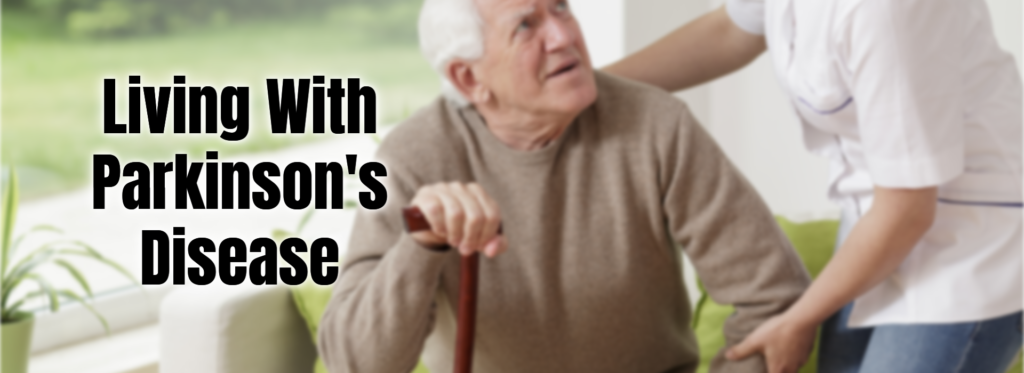
Living with Parkinson’s Disease
Living with Parkinson’s Disease can present various challenges, but with the right strategies and support, individuals can lead fulfilling lives. Here are some important aspects to consider when navigating life with Parkinson’s Disease:
Healthy Lifestyle:
Maintaining a healthy lifestyle is crucial for managing Parkinson’s Disease. This includes following a balanced diet, engaging in regular exercise, getting sufficient sleep, and avoiding harmful habits such as smoking and excessive alcohol consumption. A nutritious diet consisting of fruits, vegetables, whole grains, lean proteins, and adequate hydration can support overall health and help manage symptoms. Regular exercise, as discussed earlier, can improve physical well-being, enhance mobility, and boost mood. It is important to consult healthcare professionals or specialists to develop an exercise plan suitable for individual abilities and needs.
Medication Management:
Strict adherence to medication schedules is essential for optimal symptom control and management of Parkinson’s Disease. It is important to take medications as prescribed by healthcare professionals and to communicate any concerns or side effects experienced. Regular check-ups and discussions with the healthcare team can help ensure that medication dosages and treatment plans are adjusted as necessary. Staying informed about the purpose and potential effects of medications can empower individuals to actively participate in their treatment.
Emotional Support:
Living with Parkinson’s Disease can bring about emotional challenges. Seeking emotional support from healthcare professionals, family members, and support groups can provide comfort, understanding, and valuable coping strategies. Healthcare professionals experienced in Parkinson’s Disease can offer guidance, answer questions, and provide reassurance. Support groups can offer a sense of community, where individuals can share their experiences, exchange advice, and gain insights from others facing similar challenges. Connecting with others who understand the unique aspects of living with Parkinson’s Disease can be immensely beneficial for emotional well-being.
Adapting the Living Environment:
Modifying the living environment can help ensure safety and promote independence for individuals with Parkinson’s Disease. Simple adjustments, such as installing grab bars in the bathroom, improving lighting, and removing tripping hazards, can reduce the risk of falls. Other modifications may include using assistive devices such as handrails, raised toilet seats, or shower chairs to enhance mobility and stability. Occupational therapists can provide valuable guidance on adapting the home environment to accommodate specific needs and challenges.
Planning and Organization:
Living with Parkinson’s Disease requires effective planning and organization to manage daily tasks and maintain a sense of control. Developing routines, setting reminders for medication schedules, and using calendars or smartphone apps can help individuals stay organized and ensure that important appointments and activities are not overlooked. It may also be helpful to enlist the support of family members or caregivers in managing daily responsibilities and maintaining a structured routine.
Continued Learning and Self-Advocacy
Staying informed about Parkinson’s Disease, its symptoms, and available resources is empowering. Continuously learning about the condition and its management strategies can help individuals make informed decisions about their care. It is important to actively engage in discussions with healthcare professionals, ask questions, and voice concerns. Being an advocate for oneself and seeking the most suitable care options and support services can contribute to a sense of empowerment and improved overall well-being.
In conclusion, living with Parkinson’s Disease requires a holistic approach that encompasses a healthy lifestyle, proper medication management, emotional support, adaptations to the living environment, effective planning, and self-advocacy. By embracing these strategies and seeking support from healthcare professionals, family, and support groups, individuals with Parkinson’s Disease can navigate the challenges and maintain a fulfilling and meaningful life. Each person’s journey with Parkinson’s Disease is unique, and it is important to tailor strategies and support to individual needs and preferences.
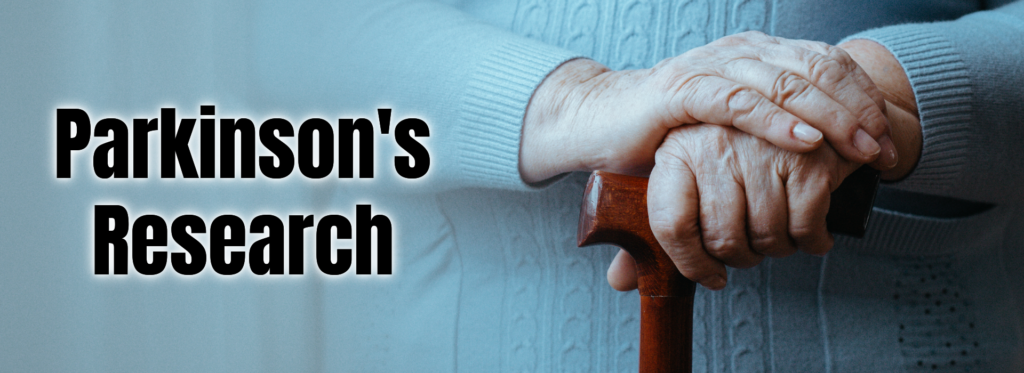
Parkinson’s Disease Research
Research plays a critical role in expanding our knowledge of Parkinson’s Disease, uncovering its underlying causes, and developing new treatment approaches. Scientists and medical professionals around the world are dedicated to advancing our understanding of this complex neurological condition. Here are some key areas of Parkinson’s Disease research:
Genetic and Environmental Factors:
Researchers are investigating the interplay between genetic and environmental factors in the development and progression of Parkinson’s Disease. By studying the genetic variations and mutations associated with the condition, scientists aim to identify potential risk factors and understand the mechanisms that contribute to the degeneration of dopamine-producing cells in the brain. Furthermore, they are exploring environmental factors, such as exposure to toxins or certain pesticides, to determine their potential role in triggering or exacerbating the disease.
Biomarkers and Early Detection:
Efforts are underway to identify reliable biomarkers for Parkinson’s Disease. Biomarkers are measurable biological indicators that can assist in early detection, tracking disease progression, and assessing the effectiveness of treatments. The development of non-invasive and accessible biomarkers, such as imaging techniques and blood tests, could revolutionize the diagnosis and management of Parkinson’s Disease, enabling earlier intervention and personalized treatment approaches.
New Treatment Approaches:
Researchers are continually exploring innovative treatment options to improve symptom management and slow the progression of Parkinson’s Disease. This includes investigating novel medications, gene therapies, and non-pharmacological interventions. Additionally, advancements in deep brain stimulation (DBS) techniques, surgical procedures, and the use of implantable devices hold promise for individuals with advanced Parkinson’s Disease who do not respond optimally to medication alone.
Disease Modification and Neuroprotection:
Beyond symptom management, researchers are focusing on developing strategies to modify the course of Parkinson’s Disease and protect the brain from further degeneration. Neuroprotective therapies aim to slow or halt the progression of the disease, preserving dopamine-producing cells and reducing the burden of motor and non-motor symptoms. These approaches may involve targeting specific biological pathways, such as inflammation or oxidative stress, or exploring the potential of regenerative medicine to restore damaged brain tissue.
Clinical Trials and Patient Engagement:
Participating in clinical trials is vital for advancing Parkinson’s Disease research. Clinical trials provide opportunities for individuals with Parkinson’s Disease to access experimental treatments, contribute to scientific knowledge, and shape the future of care. By volunteering for clinical trials, patients play an active role in the development and evaluation of potential therapies. Engaging with patient advocacy organizations and research institutions can provide information about ongoing studies and opportunities to participate in research initiatives.
Collaborative Efforts and Funding:
Parkinson’s Disease research relies on collaboration among scientists, clinicians, advocacy groups, and funding agencies. Governments, nonprofit organizations, and philanthropic foundations play a crucial role in supporting research through grants and funding initiatives. These investments help drive scientific discoveries, facilitate collaboration, and accelerate the translation of research findings into clinical practice.
It is important for individuals living with Parkinson’s Disease, their families, and caregivers to stay informed about the latest research developments. By staying engaged, individuals can contribute to research efforts by participating in clinical trials, supporting advocacy organizations, and raising awareness about the impact of Parkinson’s Disease on individuals and communities. Together, we can advance our understanding of Parkinson’s Disease, develop more effective treatments, and ultimately work towards finding a cure for this challenging condition.

Conclusion
In conclusion, Parkinson’s Disease is a complex neurological disorder that affects millions of people worldwide. By deepening our understanding of this condition, we can provide better support and care for individuals living with Parkinson’s Disease. We have explored the causes of the disease, including genetic and environmental factors, and discussed the wide range of symptoms that individuals may experience. Through early diagnosis and a comprehensive treatment plan, including medication, physical therapy, deep brain stimulation, and lifestyle modifications, individuals with Parkinson’s Disease can effectively manage their symptoms and maintain a good quality of life.
Additionally, we have highlighted the importance of ongoing research in Parkinson’s Disease. Scientists and medical professionals are continuously working towards unraveling the mysteries of this condition, investigating genetic and environmental factors, exploring new treatment approaches, and searching for a cure. By actively participating in clinical trials and supporting research initiatives, we can contribute to these efforts and pave the way for advancements in the field.
Living with Parkinson’s Disease requires adjustments and support. Maintaining a healthy lifestyle, following medication schedules, seeking emotional support, and adapting the living environment are essential for managing the condition effectively. By embracing these strategies and seeking assistance from healthcare professionals, family, and support groups, individuals with Parkinson’s Disease can lead fulfilling lives.
Let us remember that empathy, understanding, and education are key to supporting individuals with Parkinson’s Disease. By raising awareness and fostering a supportive community, we can help reduce stigma, provide a network of support, and advocate for further research and resources. Together, we can make a positive impact on the lives of those affected by Parkinson’s Disease and work towards a future free from its challenges.

Disclaimer:
Disclaimer: The information provided in this article is for general informational purposes only. While we strive to provide accurate and up-to-date information, we make no representations or warranties of any kind, express or implied, about the completeness, accuracy, reliability, suitability, or availability of the information contained within the article. The content in this article should not be considered medical advice, diagnosis, or treatment. Always seek the advice of a qualified healthcare professional regarding any medical condition. Any reliance you place on the information provided in this article is strictly at your own risk. We will not be liable for any errors or omissions in this article or for any losses or damages arising from its use or reliance upon the information provided. It is important to consult with a healthcare professional for specific medical advice tailored to your individual needs.

What are the early signs of Parkinson’s Disease?
Early signs of Parkinson’s Disease may include tremors, stiffness, slowness of movement, and difficulty with balance and coordination.
Can Parkinson’s Disease be cured?
Currently, there is no cure for Parkinson’s Disease. However, various treatment options are available to manage the symptoms and improve quality of life.
Is Parkinson’s Disease hereditary?
While Parkinson’s Disease can sometimes run in families, it is generally not considered a purely hereditary condition. Genetic and environmental factors both play a role in its development.
Can young people develop Parkinson’s Disease?
While Parkinson’s Disease is more commonly diagnosed in individuals over the age of 60, it can affect younger people as well. Early-onset Parkinson’s can occur in individuals under the age of 50.
Are there any lifestyle changes that can help manage Parkinson’s Disease?
Yes, adopting a healthy lifestyle can complement medical treatments for Parkinson’s Disease. Regular exercise, a balanced diet, adequate sleep, stress management, and social engagement can all contribute to overall well-being.
What is deep brain stimulation (DBS), and how does it work?
Deep brain stimulation is a surgical procedure where electrodes are implanted in specific areas of the brain. These electrodes deliver electrical impulses to modulate abnormal brain activity and reduce motor symptoms.
What are the side effects of Parkinson’s Disease medications?
Parkinson’s Disease medications may have side effects such as nausea, dizziness, constipation, hallucinations, and changes in blood pressure. It is important to work closely with healthcare professionals to manage these side effects.
Can Parkinson’s Disease affect cognition and mental health?
Yes, Parkinson’s Disease can impact cognition, causing difficulties with memory, attention, and executive functions. It can also lead to mental health issues like depression and anxiety.
Are there support groups available for individuals with Parkinson’s Disease?
Yes, there are support groups and organizations dedicated to Parkinson’s Disease that provide valuable resources, information, and a supportive community for individuals and their families.
How can I contribute to Parkinson’s Disease research?
You can contribute to Parkinson’s Disease research by participating in clinical trials, supporting advocacy organizations, and raising awareness about the condition. Your involvement can help advance our understanding and treatment of Parkinson’s Disease.
Note To Reader
Please note that the answers provided here are general and may vary depending on individual circumstances. It is always advisable to consult with healthcare professionals for personalized information and guidance regarding Parkinson’s Disease.


